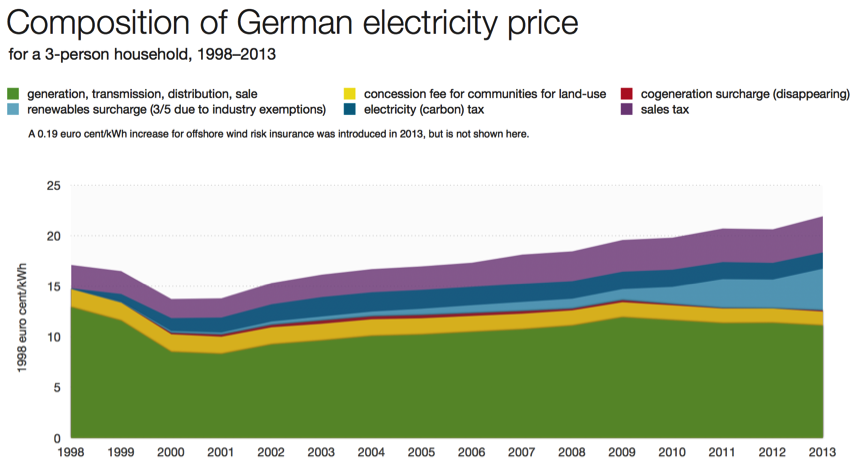In a recent article, Rocky Mountain Institute’s Co-founder, Chairman, and Chief Scientist, Amory Lovins, describes Germany’s transition to a high share of renewable energy and the policies the country has put in place to achieve its ambitious energy goals.
Despite its relatively cool and cloudy climate, Germany has managed to nearly double the share of renewables on its grid since 2006, generating 23% of its electricity from renewables in 2012. Even with this growing share of renewables, Germany’s grid remains the most reliable in Europe. Given current trends, Germany is on track to meet or surpass national targets for 50% electricity from renewables by 2030 and 80% by 2050.
Much of Germany’s success in bringing renewables online can be attributed to its feed-in tariff program, which provides long-term contracts to renewable energy producers. In 2000, the German Renewable Energy Act granted renewables priority access to the grid and ensured that remuneration for energy producers did not draw from public funds. Instead, energy producers are paid through funds generated by a fee (known as the EEG surcharge) that is included on all ratepayers’ electricity bills. As renewable energy production continues to grow, the surcharge has had to rise to cover the cost of remuneration for more and more energy generators.
Lovins emphasizes that, while many people claim renewable energy is causing Germany’s electricity prices to rise, “such claims are little more than smoke and mirrors.” Renewables account for only one-ninth of the rising EEG surcharge price in 2013, with the majority of the increase due to industry exemptions. Lovins argues that a feed-in tariff simply levels the playing field by providing payment to any energy generators that produce any source of energy. Adding renewables to the grid actually reduces other costs via several mechanisms, such as the wholesale electricity price and the electricity tax, which nearly offset the EEG surcharge.
For the last several years, Germany has demonstrated the feasibility of a renewable energy future when the right goals and policies are set in place. It has proven that renewable energy can more than offset the generation lost by phasing out coal and nuclear plants, while supporting a thriving economy. In 2011, Germany’s economy grew three percent, and over 200,000 jobs have been added through the renewables industry since 2004. As Lovins notes, other countries would be well served by following Germany’s lead in transforming its energy landscape to ensure long-term energy sustainability, safety, and prosperity.

